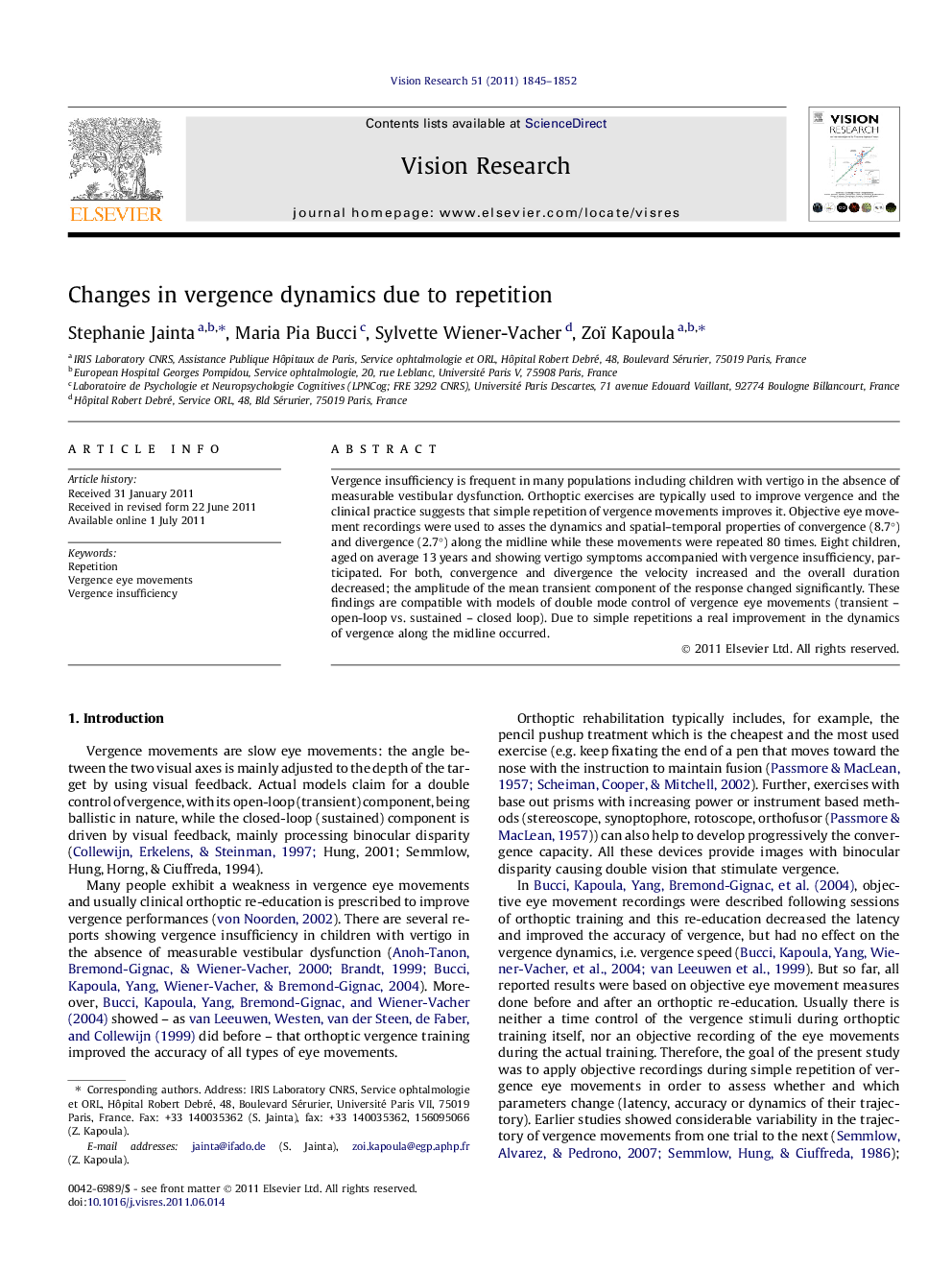| Article ID | Journal | Published Year | Pages | File Type |
|---|---|---|---|---|
| 4034101 | Vision Research | 2011 | 8 Pages |
Vergence insufficiency is frequent in many populations including children with vertigo in the absence of measurable vestibular dysfunction. Orthoptic exercises are typically used to improve vergence and the clinical practice suggests that simple repetition of vergence movements improves it. Objective eye movement recordings were used to asses the dynamics and spatial–temporal properties of convergence (8.7°) and divergence (2.7°) along the midline while these movements were repeated 80 times. Eight children, aged on average 13 years and showing vertigo symptoms accompanied with vergence insufficiency, participated. For both, convergence and divergence the velocity increased and the overall duration decreased; the amplitude of the mean transient component of the response changed significantly. These findings are compatible with models of double mode control of vergence eye movements (transient – open-loop vs. sustained – closed loop). Due to simple repetitions a real improvement in the dynamics of vergence along the midline occurred.
► Clinical practice suggests that simple repetition improves vergence insufficiency. ► Eye movement recordings were used to asses the dynamics of vergence. ► For convergence and divergence the velocity in- and the overall duration de-creased. ► The amplitude of the mean transient component of vergence changed significantly. ► Repetition as clinical means affected successfully structures controlling vergence.
